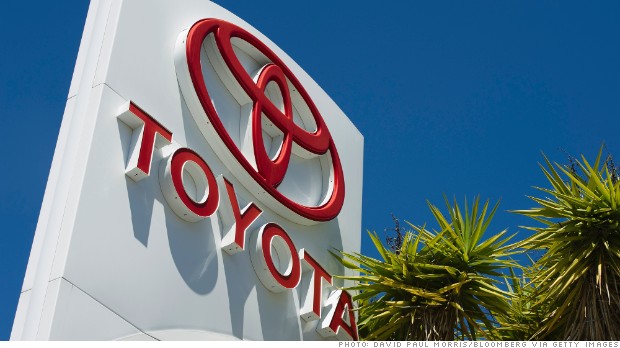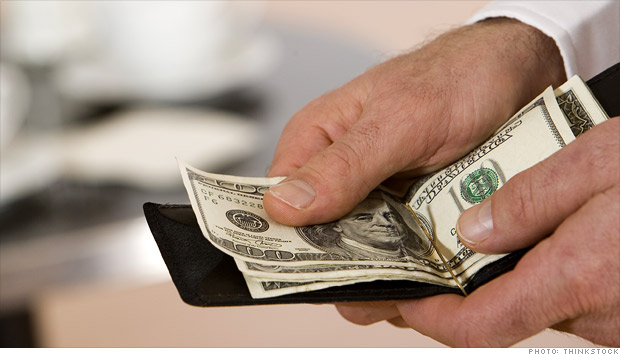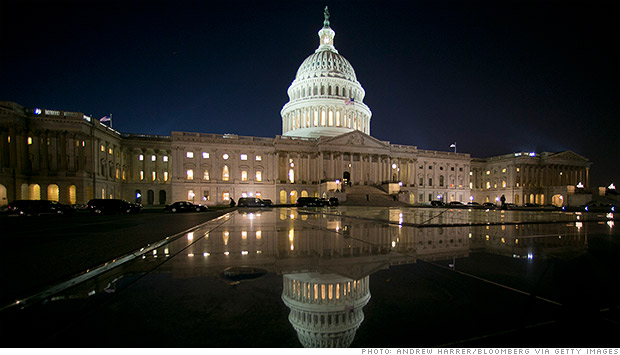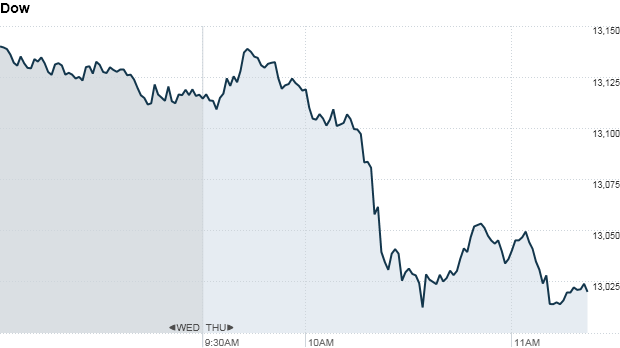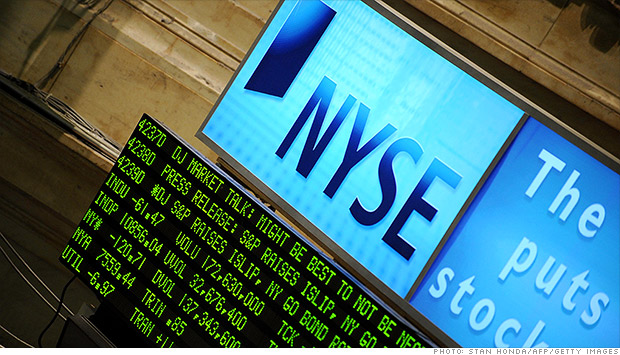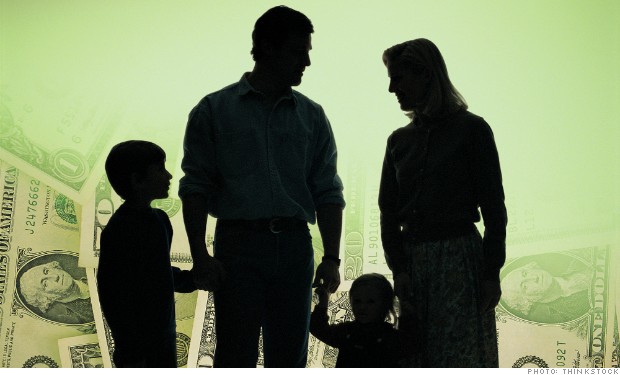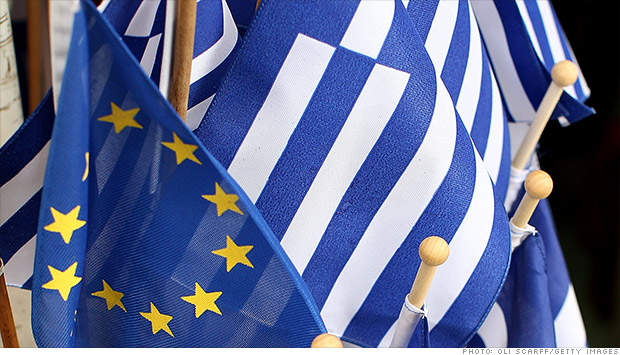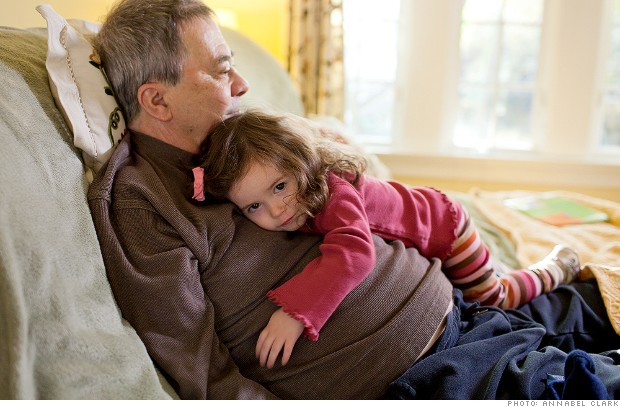
Steve West spends mornings with his granddaughter, Gracie, 2, who has learned to hug him even though he can't hug back.
(Money Magazine)
This story is part of a three-part series on the financial challenges families face when a loved one is dying. Part One tackled funeral costs, Part Two, the costs and options to make the end of life as comfortable as possible.
Steve lost his footing. The fall would have killed him if some branches hadn't broken his descent. As it was, it took 10 hours for rescue workers to reach him. He fractured his arm and leg and suffered numerous internal injuries, resulting in a four-week hospital stay that ruined his plans to attend the Woodstock music festival.
Steve's remarkable survival made the front pages of the Chattanooga newspapers, and soon became a footnote to a busy and productive life.
Death, however, was preparing to get even. It cast an unseen shadow as Steve earned a doctorate in sociology, taught at a small Virginia college, and switched careers to become a successful pharmaceutical market researcher in Philadelphia; it lay in wait as he married, had a child, divorced, and married again.
Then, in 2008, Steve began to feel that his left leg wasn't quite right -- he had "tingling sensations," he recalls. In September of that year, he and his wife, Pamela Learned, were on a trip to Scotland when he noticed a weakness in his left leg. After a day of sightseeing in Edinburgh, he was walking with a limp.
Back home in the upscale Philadelphia neighborhood where they lived, Steve and Pam theorized that the problem was nerve damage from a fall he had sustained during a trip to Yellowstone National Park the year before. But not only was his leg getting worse, it was beginning to twitch. Steve had been a runner who could easily put in three to five miles several days a week. No longer.
"The distances kept getting shorter and shorter," he says. Pam recalls, "It was so mild I said to him, 'You're just getting old. Start walking.'"
Related: The high cost of saying goodbye
Steve's work made him knowledgeable about medical subjects, so he did some research. Sitting in bed one morning with his wife, drinking coffee, Steve told her he thought he might have ALS, a progressive neuromuscular disorder also known as Lou Gehrig's disease, after the baseball great who was stricken with it in the 1930s. A visit to a neurologist at Pennsylvania Hospital in March 2009 confirmed Steve's self-diagnosis -- and the devastating prognosis: ALS is always fatal, usually within five years.
Today, nearly four years later, Steve's disease has progressed to the point where he has lost the use of his arms and legs, has trouble breathing, and can no longer feed or care for himself. Just when his death will come is unknown. It depends on when he will, literally, run out of breath -- when his respiration will become too weak to sustain life.
Compared with the typical end-stage hospice patient, Steve, 60, is doing well. "I can whip their asses," he says. He and Pam, 53, go out daily for walks, visit with friends, stop in for lunch at a local pub. Still, they are realists. Based on his condition now and the doctor's most recent assessment, Pam's response is swift and unequivocal when they are asked for their thoughts about how much longer Steve has to live: six to nine months.
Any patient and family facing terminal illness knows that the physical and emotional toll will be immense, of course. What's often underestimated at first: the financial toll, as ongoing health care bills drain savings, even for couples like Steve and Pam, who earned a six-figure income and had built what they thought was an ample cushion.
Related: Watchdogs for health care
When it's the main breadwinner who is ill, the anxiety about money is heightened -- especially if that spouse was also primarily responsible for handling the household's finances. That's the case for Steve and Pam.
Weighed down by uncertainty about what the future holds, Pam finds herself embracing worst-case scenarios that may never materialize and worrying about how she will support herself later at a time when every minute the couple have now is more precious than ever.
Steve West and Pam Learned found each other on Match.com in 2003 and were married four years later. Theirs was a very modern romance, a joining of two mature adults with three grown children from previous marriages between them.
He has a daughter, 31, who works in the financial industry in New York City; Pam has a son, 27, in Los Angeles and a daughter, 30, who lives nearby with her husband and daughter.
The couple's combined income -- Steve made over $200,000 a year; Pam, $60,000 to $70,000 -- meant that they were able to enjoy a comfortable lifestyle. They set aside about $10,000 a year for twice-yearly vacations, mostly to national parks, where Steve would fly-fish.
Both owned businesses that allowed for frequent travel. Pam, a former journalist, owned a firm that provided marketing services to nonprofits and municipalities; Steve was a founding partner of a pharmaceutical market research firm.
They had taxable savings and investments of $500,000, retirement accounts totaling about $700,000, and no debt except for a mortgage on their $550,000 house (a far from onerous $2,100 a month). They felt as if they were set financially, or at least well on their way.
Related: Health care premiums rise 62% since 2003
And they were -- right up to the day Steve learned he had ALS, a disease so rare that only 5,600 people a year are diagnosed with it.
Amyotrophic lateral sclerosis, he discovered, is an equal-opportunity affliction, making no distinction for race, ethnicity, or gender. The disease slowly shuts down nerve cells throughout the body, leaving patients unable to walk, use their hands, eat, or speak, though their brains remain vibrant.
While it's been more than 70 years since Lou Gehrig's emotional "Luckiest Man" farewell speech at Yankee Stadium raised the profile of ALS, there is still no known cause or cure, only treatments to forestall the steady decay.
Steve's body began to act in strange ways almost immediately after he was diagnosed. "I would wrap my arms around him, and I could feel these little chi-chi-chi-chi-chi-chi movements in his muscles," says Pam. "It was like holding twinkling stars."
Those movements are formally called fasciculations, a kind of muscle twitching in ALS patients caused by the steady degeneration of the nerves.
As Steve and Pam struggled to come to terms with the severity of his disease, a second shock wave followed: ALS, they were learning, was going to be very expensive.
"There were hundreds of decisions to make," Steve recalls. Would they have to move? Quit their jobs? How would they manage their money so that Steve could be cared for, while still leaving enough to support the household?
The questions loomed even larger when they looked beyond Steve's death. Would their retirement savings be enough to support Pam for the rest of her life? And if she had to go back to work after a long period of time off, what could she reasonably expect to earn, if she could even find a decent job?
Steve is reflective, not somber, talking about that initial period of coming to terms with ALS. "There was sadness early on, in recognizing what it meant, but it didn't really last that long," he says. "There was also anxiety, not so much over the prospect of dying, as getting things situated for the rest of our lives."
The first question they tackled was whether to move. Their three-story, six-bedroom Tudor Revival house was hardly ideal, but they decided to stay, making necessary renovations to adjust to the rapid deterioration of Steve's body.
Their home was just a few minutes' walk from the regional rail line, and they were blessed with neighbors who were willing to pitch in and help at short notice. That would become increasingly important as Steve's condition worsened.
So they began essential renovations late in 2009. First they spent $500 to put railings on stairwells and in the bathroom. An elevator was installed for about $24,000. More work followed in February 2010. The bathroom was revamped, with a new toilet and wheelchair access to the shower, while the bedroom was enlarged to make room for medical equipment by breaking through the wall of an adjoining room to create a single, bigger space, for $28,000. A ramp to the front door ran them another $2,000. Total price tag: $54,500, which they paid for out of savings.
Related: Cutting the high costs of end-of-life care
The necessity of the changes soon became apparent, as Steve's leg muscles began to deteriorate. For the first year of his illness, he was able to get around with a cane. Then, after another five months, he needed a walker. When his legs could no longer support him, he switched to a foldable wheelchair, the kind that anyone might need after a bad leg fracture or a hip replacement.
By the fall of 2010, as he grew weaker, he could no longer operate a chair under his own power. He moved into an electric wheelchair. The first ones were loaned to him by the ALS Association, but then they bought a pricey custom-made model that required upgrades as his condition worsened. To transport Steve in the chair, he and Pam bought a specially designed Braun Entervan for $36,000.
Fortunately, as the expenses mounted, they still had Steve's salary to rely on. For the first couple of years, he was able to work full-time, initially in the office and later from home. Skype was a great help, as was voice-recognition software that allowed him to operate a computer by verbal commands. (He still can navigate a computer, using voice software and the one finger he can get to move.)
Pam, however, found maintaining a full work schedule tough, as helping Steve required more and more of her time. She tried moving her marketing business close to home, but in late 2010 decided it would be better if she stopped working altogether and devoted herself to helping Steve.
Being a full-time caregiver, Pam soon learned, was physically draining and at times "a real whack on the identity." (She found herself feeling resentful a few months back when a hospital intake person listed her occupation as "homemaker.")
More trying was dealing with people who refused to accept the truth of Steve's situation. Pam describes how a local storekeeper kept asking, "How is Steve? Is he cured yet?" Pam would respond, "There is no cure." Finally, she took her business elsewhere: "How many times do you have to say, 'Incurable'?"
With less income but expenses rising, Steve and Pam found money getting tight. Contributing to the strain: His private health insurance policy proved inadequate when dealing with ALS.
Decisions on coverage for equipment, such as the power wheelchair and a lift to help Steve in and out of bed, took two to four months at times, impractical for an illness in which patients deteriorate so quickly. (Pam remembers one insurance company person she spoke to on the telephone who admitted he didn't realize ALS was a fatal disease.)
Even when approval came through, Pam says, the benefits sometimes felt stingy. Case in point: The specialized power wheelchair that Steve needed once he lost use of his arms would have cost them $22,000 in co-payments. After researching, Pam found out that if she bypassed the insurance company and bought the chair directly from the dealer, they'd instead pay $17,000.
"Doing battle with insurance was the biggest nightmare until we got into Medicare," says Pam. (As an ALS patient, Steve qualified for Medicare earlier this year, once he stopped working and began collecting Social Security disability benefits.)
Related: The painful new trend in Medicare
By contrast, the ALS Association provided valuable assistance from the start. Early on, Pam and Steve would pack a lunch and spend hours at a clinic affiliated with the association, meeting with seven or eight specialists. They saw an occupational therapist, a social worker, a counselor, an MD, a respiratory therapist, and whatever other medical experts he needed. All were covered by insurance. In addition, the association lent them medical equipment such as a folding wheelchair and walker at no charge, saving Steve and Pam thousands of dollars.
The rest of their family also pitched in. Pam's son, Mark, lived with them for a year and helped take care of Steve, getting him in and out of bed.
When Mark moved to Los Angeles in May 2011, Pam hired a home health care aide for four hours a day, first two, then seven days a week. Steve's daughter helps out with the costs, contributing to the $2,400 monthly fee to the aide's agency.
Neighbors in their community of Chestnut Hill have provided a constant stream of assistance as well. They drop in frequently, offering food and companionship. When Pam pinched a nerve earlier this year, her neighbors took over the task of getting Steve into bed every night. It was difficult to ask for help at first. But as time went on, Pam realized that folks weren't just being polite -- they really wanted to help. And Pam realized she needed it.
Early in 2012, the muscles in Steve's torso became weaker, affecting his breathing and eroding his energy. He was forced to quit work for good.
In the months since, ALS has steadily robbed him of more and more. Steve can no longer feed or bathe himself. His breathing capacity is less than 20% of normal, and speech is a chore, as he struggles to gather the lung capacity needed to utter more than a few sentences.
Pam and Steve still go out almost daily, strolling through the neighborhood, visiting local parks, stopping at coffee shops and stores. Friends, neighbors, and family drop by frequently to help out and spend time with Steve. Adjustments are subtly made. Steve can no longer embrace Pam's granddaughter, Gracie, when she stops by each day for a visit, so instead the 2-year-old climbs into his lap, burrowing against his chest. Their black-and-white cat, Oreo, set in its ways at 16, was at first miffed at Steve's inability to pet him but has learned to rub against his inert hands.
The daily jaunts and visits from well-wishers, though welcome, are becoming more difficult as time goes on. Steve tires easily and needs to nap. Both Steve and Pam know the day is fast approaching when Steve will not be able to swallow.
"With a ventilator and a feeding tube, your life can be significantly prolonged," says Steve. "But it's not very pleasant for anybody, family or patient." It's not an option Steve plans to take."
NEXT: How she will manage once he is gone
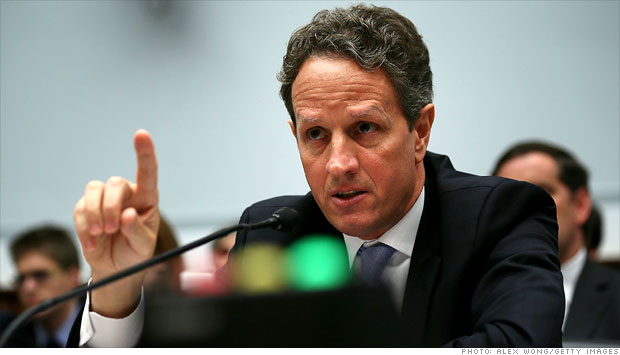
![]()
